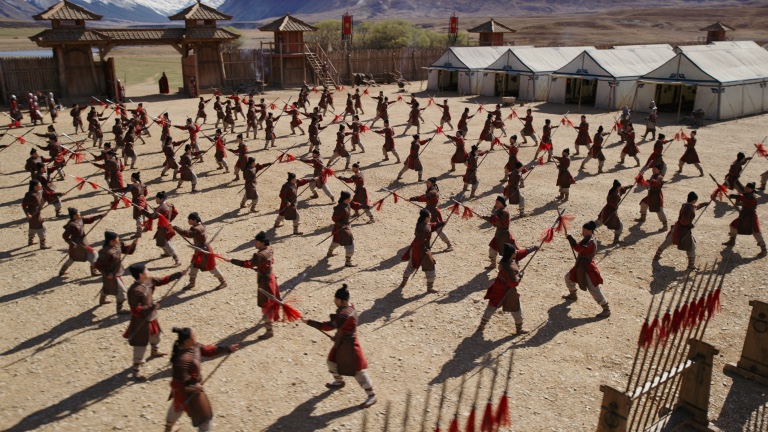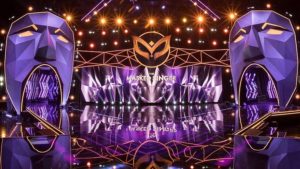
Next up in Below the Line’s series of artist profiles, we look at the exciting and innovative work of Emmy-winning Production Designer James Pearse Connelly, one of the top designers for reality television with some of his work being seen on top shows like The Voice, The Masked Singer, The Kelly Clarkson Show, and most recently, TBS’ quarantine competition show, Celebrity Show-Off. A member of the Television Academy since 2007 and a governor between 2013 to 2018, Connelly currently serves as chairman of the Primetime Emmy Show Committee.
More importantly, Connelly is head of JP Connelly Inc. that has been one of the groundbreakers in the industry of incorporating virtual production design to create even more amazing spaces for the growing number of reality shows being created by the networks. These environments have become even more important as production has pivoted to the socially-distanced responsibilities of making television in the age of COVID-19, which just makes the services provided by Connelly and his team even more essential.
Below the Line spoke to Connelly a few weeks back about his background before becoming a Production Designer and his shift to creating virtual environments and spaces, as well as how his design studio has pivoted to the working-in-lockdown ethos of the pandemic.
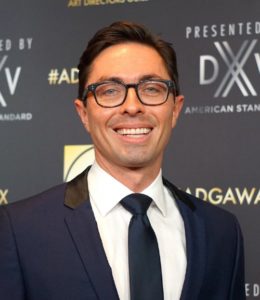
Below the Line: Just wanted to start by asking about your background before you arrived at your current career.
James Pearse Connelly: Yeah, I mean, I’m a theater kid. I was in high school. I kind of found my groove with the backstage folks. I did mostly lighting and tech, and a little stage management in high school, and then just by process of elimination, because I really just didn’t want to continue on the sort of science and foreign language tract, I chose a career as a BFA theatre artist. I majored in set design, and I did a little bit of work in costumes. It kind of clicked for me in in art school. I went to Rutgers and just found my little group that I liked, and I didn’t ever have any expectations. I just kind of saw that through worked really hard, liked the work, and I graduated at the convenient time of 9/11, so there was no work, kind of like today in pandemic land. There’s not a lot of work out there for new folks. I moved to San Diego as a prop guy. I shopped. Worked at two theaters, worked really hard, basically ‘cause it keeps me off the streets, right? I did a lot of shopping, a lot of propping, a lot of painting. I ran into a woman at a wedding in San Diego, who was like, “You know, you’d be really good in L.A. You’d just love television. You’d make a little bit more money there than theater in San Diego. You should try it out.” I actually had all that background of theater, learning all those techniques of drafting and set designing and didn’t know it would come in handy when I moved to LA. I didn’t know a soul and met a few people, and right back then was like 2003-2004, and reality was hot. There were so many reality shows and I mean you couldn’t break into union work, right? I did like Team America, assistant work on that staff, but you couldn’t start doing like major work.
I was having a blast. I mean, I was 24 years old, so I did a lot of reality TV, and then I started working for designers and reality turned into that world of alternative unscripted, so that was like talk shows and award shows and music performance shows, and I loved it. I didn’t have to read, and it was the most creative scenery you could possibly think of. Who didn’t mind designing a set for Justin Timberlake? That was so cool for somebody in their mid 20s. I just fell in love with that genre, and it was a little bit like the Wild West back then. And, again, no expectations. I just started designing my own scenery. I art directed Lopez Tonight, and then did all the sketches in the sketch comedy and all the performances on that, and I love George. He’s a great guy, very generous to me, and gave me a lot of opportunities. After that show, I went on to The Voice and designed the reality scenery for The Voice. From there on out, I was just taking on as much as I can. I’ve never said “No,” really, and I’ve managed to build up a reputation in the industry. We deliver things really well, and I fully believe in approaching this kind of genre of work with an organized and very professional mindset, just like you would any project. It’s sort of like taking the Wild West and then organizing it and making it actual storytelling.
So yeah, I’ve been taking on show after show, and the nature of the business now is overlapping schedules, and micro-episodic pickups, so my team has no grown into a company, and we have a real traditional pipeline in the office, and we’re able to really kind of design and service shows. Sometimes, we have 12 or 15 at a time.
BTL: You’ve had an especially long run on The Voice, so are there a lot of changes from season to season, or once you’ve designed the season, there aren’t a lot of changes over the course of that season?
Connelly: Let’s break television into arts and sciences. The show for a few seasons, it didn’t know its arc. In early stages, it purposely wanted to keep it fresh and mix up the look, so the reality in the backstage and rehearsal worlds, they were a big part of the brand of the show. All the color came out, all the texture came out of that segment of the production, so we were always reinventing. In about season eight or nine – I can’t remember at the time – it kind of found its visual DNA, but the science of fitting the sets into the new stages or fixing problems from previous seasons or talent adjustments, because obviously, the coaches change, availability of soundstages and sort of recreating egress and paths and actual director blocking is always a work in progress on that project. Yes, it keeps us on our toes and keeps us employed. I wouldn’t say it’s a lower priority by any stretch of the imagination, but I definitely know the color read that we always use, so there’s a few less things we have to guess at.
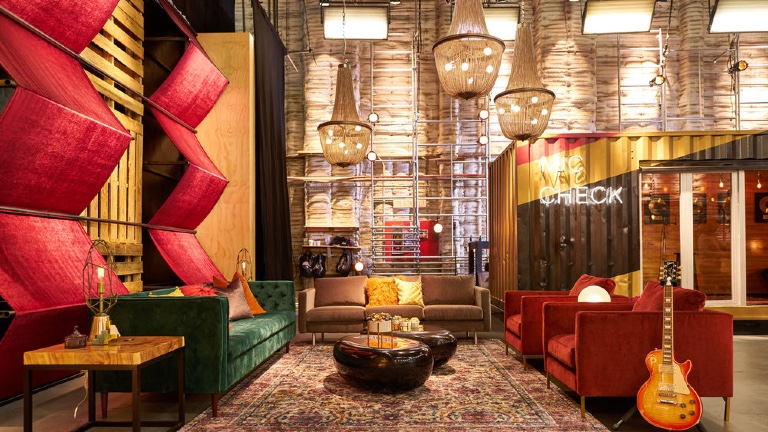
BTL: We just ran a piece on Jason Sherwood on the site, and I was a amazed how young you both were, so there’s a pretty young group of people coming in this world right now. Have you noticed that yourself?
Connelly: Well, I mean, thanks. I’m 40 years old, so I feel like I’m on the cliff’s edge of young here. Jason’s much younger than me. He’s got to be 30, right? I know that he’s just getting his feet wet out there. I guess it’s generational, and I feel it’s about time. I do think that the client probably appreciates a fresh look from time to time, especially for a design point of view. Obviously, people have new visions and new esthetics, and I’m sure that’s exciting for a lot of new networks. Let’s be honest, too. There’s a lot more work now than there ever was 10 years ago. There are so many streaming networks with original content out there, and now, there’s a demand for original content across every network and whatever platform. There’s plenty of work for any newbie to start really.
BTL: Going by what you said about breaking into L.A., I would think there’s unions and production designers in their 60s and 70s who have been doing it forever, so it’s amazing to see such a younger group coming up in the business.
Connelly: It’s kind of cool. Even studying it was like hand drafting, even when CAD was picking up a little momentum, I can’t believe I was learning this ancient art form of hand drafting right now. This is the freakin’ 90s! If this industry kind of goes underwater like set design, how long can that last? It turns out now more than ever, you just need good environment design. You just need it and that has to pivot to COVID and making things safe. Now, my world is really about studying distances in six feet and filling those negative spaces up, and there’s a high demand for environments. I don’t think this this career is ever going away. I think it’s actually quite a strong career path for some people coming out of college.
BTL: I was watching some of the videos of your work, so when did you start using video game rendering software as part of the process and how did that come about?
Connelly: Oh, good. I’m glad you asked, because I feel like this is a large discussion really. When I started designing The Voice, for instance, and then when I was doing Lopez Tonight, and even when I was art-directing for a lot of designers. This was, let’s say the span between 2005 to 2010, 3D work was just getting into set design. There was a program called SketchUp — people were getting into it. There was AutoCAD program and VectorWorks, they were also doing 3d, and there was this excitement in the set design world, especially us younger guys back then, to be involved in 3D and bring that new digital 3D craft. People were making models forever, but they needed that young guy in the office, and I was that guy. I was whipping through 3D and doing Photoshop renderings, and the designer I was working for at the time, we became hot — it was exciting. We were dabbling in new technology. I’ve always seen and prioritized the importance of illustrations and set design pre-vis sketches in 3D. It’s always been a passion of mine, and the from about 2009 until 2014, I did my own, as usual. SketchUp Photoshop on top, and I was dabbling in Cinema 4D, which is another software program. How Cinema 4D works kind of like a few others like Maya and Rhino, it’s called physical rendering. What you do is you set all the controls up in the three-dimensional space – and I’m gonna just use some short form here – you put it in the oven and you wait for it to bake. Sometimes, it can take two hours, four hours, depending on the complexity, six hours, and it comes out of the oven near like, “Kinda, it’s close. Let me try that one more time.” And then you do it again, test and test, back and forth until you wind up with the perfect lighting. This really comes down to a lot of lighting algorithms. I was used to doing that, and at that point in my career — we had a couple projects going, mostly The Voice — I needed help, so I brought an assistant to do that. Young kid, also familiar with the software, and he did it the way I liked it, through Cinema 4D, and that ended up as a way of life for a couple years. It was good, because I was very still involved in the software. I ran into a guy about six years ago, who was looking for work, and he introduced me to real time rendering. And he said, “Well, we can make the changes, and you can see it live. I mean, put it in a light right now, look at it, and then change it. “ I thought, “Well, that’s pretty damn cool.” I’d been waiting hours to see it. So I hired him on the spot, and I pivoted. At that point, there was a bit of a release for me, because I wasn’t as fluent with that new software, so I kind of had to adapt, and also, I had to change the workflow in the studio.
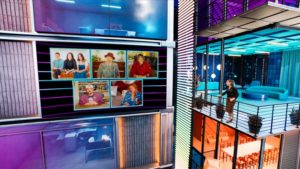
It did two things for me: It gave me the ability to sort of step back from the actual software as a designer, and look and really think about what the show really needed. So immediately, my work got better. I was able to option new things in real time, and really flesh out some thoughts, as opposed to feeling stressed about time. I could even look back and see the work change immediately over and see some of the quality and some of the really fleshed out details just get enhanced. The second thing was that it got us to a studio level where all of my internal lead times could be shortened immediately. I went from finishing a set design sketch in a day, as opposed to having to wait like four days for this thing to bake and finish, light again, whatever. It opened up my bandwidth, and I know when I do that, because I know who I am at this point, I sort of welcome on new opportunities, so suddenly I just grew. I didn’t tell anybody that. I was just working in this video game software that shortened time, gave me better eyes on things, and I wasn’t about to tell a soul because my work got good, and it was really, really great. So that happened, and we worked in that that way for six years, so we knew the program and I’ve learned it, too! I’m not that bad at it. I clunk around but not like the guys that I work with, and it’s great.
And then the pandemic hit, and there is a real thirst and a real demand right now for real time rendering environment designers and people who know the software. This spans many different industries, and suddenly now I’m advertising it. We are an Unreal Epic Games design house. We know it really well, and we have a proven workflow. We’re just now dabbling in the creativity of it all, really. I mean, you can do so many cool things like exploring the three-dimensional depth in those worlds. It’s really exciting.
BTL: I was watching some of the demo videos, and something like The Masked Singer, I don’t think I would have known that was a green screen stage and all virtual. I assumed it was all built including the rotating video screen.
Connelly: Oh, my God! We did that like in 10 days. That’s really nice of you to say to. Fox doesn’t have that kind of money to build a set like that. I got a call, and then 10 days later we were on air. I will say this about that show and project. It was all of our firsts, but these are not brand-new techniques. We’re adding one little detail to them, but people have been doing green screen VFX work forever. Even The Wizard of Oz had a projection background in one shot where we had a little bit of movement. There’s a demand for moving backdrops and interactive spaces that key in, so we use green screen on that for The Masked Singer. The difference is that you can allow the director and the DP in real time, see what they’re seeing through an encoded camera and get real world scale and parallax movement out of it. It’s like you’re really there, depending on the photorealistic details you put into the textures and stuff. The DP really is zooming in, and he’s moving, and I’m not doing any of that. I just built the world for him to move in. That’s really exciting stuff, in my opinion as a designer.
BTL: I was also impressed by the stuff you’ve done for Celebrity Show-Off, which is a show that probably wasn’t even thought of until March or April. You designed a pretty amazing virtual apartment for Mayim Bialik. The talent can get around the green screen and have enough physical objects to keep them walking through walls?
Connelly: Sure, talent they get it, they’ve been on green screens before. That stuff exists. Really, the recipe for making it feel even more real and getting authentic behavior out of it is to mix physical elements with some virtual elements. It’s just trying to find the right balance between the two. You don’t want the tech to ever dominate. Otherwise just hire a VFX artist. I’m a designer, and to me, the priority is building a world and developing it together with the client. With Celebrity Show-Off, we were at the height of the pandemic, total lockdown, and green screen it was. We needed to isolate her and protect her, and we mixed in some physical elements, but you can also see in the design, as well. I’m really excited about its limitless possibilities. I just made a city of the future on a balcony, something you could never really recreate on the biggest soundstage ever, for a multi-camera show. That’s another thing to take into consideration. These are shot multi-camera. This is not a scripted feature that’s going into post for nine months with one single camera, storyboarded out. You’re letting the director do the switching live to tell the story and so all those components have to be factored in when you make the right choice of what technology to use.
You can tell in that design, and I look back at it now, too, and it just wrapped, but I was so excited about not having any floor, and to build a world that can go on and look forever and get infinite depth and infinite layers. I had a lot of fun with it, and it’s a crazy little city, and it was a very exciting project. Everybody who’s working on these things too, it’s exciting to be paired up with such visionary producers, because they’re excited about new tech and exploring it, and I am, too, and that project has a lot of good vibes attached to it in my opinion.
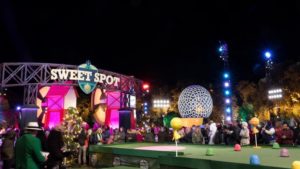
Now you see alternative programming that’s complete. 10 years ago, it [looked] a little low-grade scenery, sort of like a trip to IKEA. You’re getting much more rich environments now, because those artists and those crafts are getting involved more and more and more. I think the same thing with virtual, and that’s what’s so exciting about going out into this frontier, but there is so much value that you can bring into this by bringing in production design and set decoration and people skilled at art direction. It is ultimately the same process as building a physical set; it’s exactly the same. [FX people] are used to taking the content, and then painting every frame and compositing every frame and putting it back through post. That’s really handy work and their familiarity with the software comes in handy with that work. When you create a space, it’s a different thought process.
BTL: I feel like we’re almost at the point where someone would create a fully green screen stadium, and the different teams can play in it but what is happening around them can be changed rather than travelling from one stadium to the next.
Connelly: Oh, yeah, for sure. There are pop-up green screen studios, and actually, there are almost 160 LED studios being set-up for next year. I was talking to Epic Games this week about working together with them more and more, and they know all of the studios popping up because people are reaching out to them about help. That’s all great, but that’s assuming there are going to be environments to design into those, and who is designing those environments that go into those? I think you can tell what an engineer would do with it, right? I think there needs to be a conversation here about production designers being involved with this space. This is ultimately three-dimensional art design.
BTL: We’ve been covering a lot of how different people and crew have been returning to work, and I was curious about how you and your staff have transitioned. Is anyone going into the office to work anymore?
Connelly: No, everybody left on March 15 and set-up their workstations at home. We set up a working interface for us to share artwork and communicate on. We actually didn’t lose any work — we kept working. We do a lot of designing on paper, and a lot of development, and we also had a couple of projects midstream, and then we were picking up some virtual stuff, so we never experienced the hiccup. There had to be several self-analysis pitstops along the way. Every week, there was a hurdle to get over as people worked from home. We have a pretty rigid check-in and check-out process to touch base on how to get updates. We’ve been so collaborative in one big room, and with a studio atmosphere, things happen in different directions. That’s just impossible now. You can’t be on Zoom that long, and you have to be very deliberate. Within a couple of weeks, we figured out how to organize ourselves. That just comes from structure, establishing people’s roles and responsibilities and goals and meeting goals, and what happens when you don’t meet goals and having open conversations about that. I will say we are better for it. However, I can’t wait to see people again — it gets lonely. It’s not why I got into Hollywood. I like people, I like seeing people, and I generally like that interaction and collaboration.
You can watch the JP Connelly Design Studio reel here and find out more about how he and his team are using virtual production design to create amazing spaces at the company’s official site.




